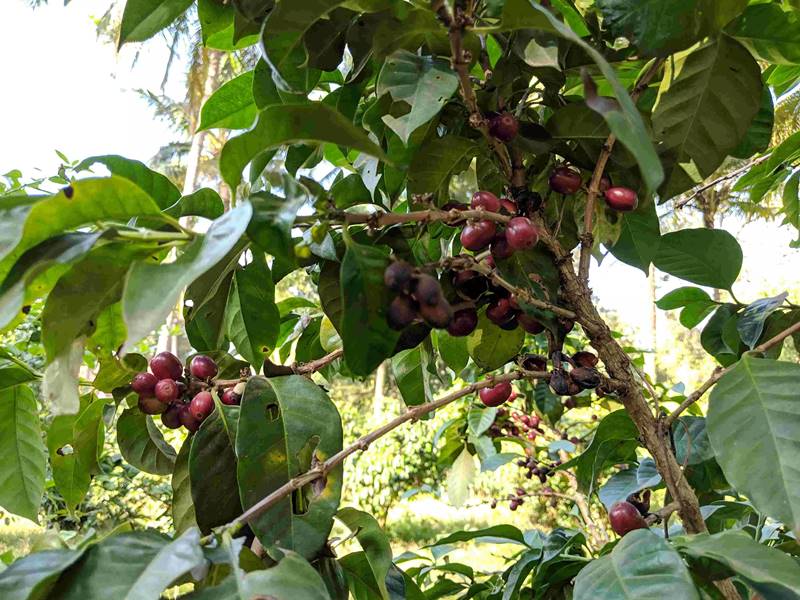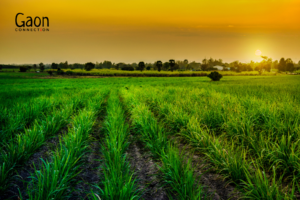Chhattisgarh, which is known for its significant food production in central India, is gradually making space for cash crops in Naxalites-prone regions like Bastar. Farmers in the district, who traditionally grew paddy, have been experimenting with a rare variety of coffee seeds with support from district administration and local scientists.
The coffee production is expected to be lucrative for farmers in the district. The horticulture department has been training the local farmers to cultivate coffee plantations in the three villages of Darbha, Kakalgur and Dilmili which fall in the Darbha block of the district. The scientists believe that the hilly topography of the area makes it suitable for coffee cultivation.
It takes at least 3-4 years for the coffee plant to produce fruits, which eventually dry and bear seeds. The coffee seed is then processed and used as the roasted, grounded coffee bean as we know it.

“Initially, I planted coffee on about a hectare of land. Then gradually, I planted more coffee, first on seven hectares and then on around eight hectares of land in total. I plant coffee in separated areas of land comprising four square metres and every such patch of land produces one-and-a-half to two kilograms of coffee beans. In total I harvested around five hundred kilograms of coffee beans,” Kulay Joshi, a local farmer from a village called Titirpur — situated 8 kms away from the Jagdalpur city — told Gaon Connection.
Talking about the profits reaped by his cultivation, Joshi added, “It was a government project; the cost of ‘Bastar coffee’ is a rupee per gram of beans. The processed coffee is sold in packets weighing two hundred and fifty grams and the price is fixed as Rs two hundred and fifty per packet. The sale amounted to around half a million of rupees from my total cultivation in a single harvest year.”

In India, coffee has traditionally been cultivated in the southern states of Karnataka, Kerala and Tamil Nadu. Historically, the experiment in Chhattisgarh is the first such project to cultivate coffee elsewhere in India. Locally, the crop is known as ‘kehwa’ and once planted, it continues to produce coffee beans for the next 60 years.
Bastar coffee provides new opportunities for local people
The switch from traditional farming to a cash crop like coffee has opened up new avenues for the local farmers — whose struggle is not just about the low prices for their traditional crops but also the Left wing extremism in the form of Maoist Naxalites who have raised an insurgency in the state for almost 50 years now.
Bastar’s Darba valley is the geography that is getting recognised for the rare varieties of the coffee that it produces — in the Arabica coffee type, the valley grows San Ramon, Chandragiri dwarf, Selection 8 and Selection 9 coffee. In the Robusta coffee type, it grows CxR variety.

Forest area occupies more than 40 per cent of Chhattisgarh and the natives are found to be heavily dependent on forests for their livelihoods. Coffee cultivation hasn’t merely increased the incomes of farmers in the area but also opened up new avenues for employment in the areas around plantations.
Chhattisgarh is suited for coffee cultivation as it requires land at an alleviation of at least 500 meters and Bastar has areas that are at an alleviation of over 600 meters. Most of the plantations are on slopes, which is ideal for coffee cultivation. It also requires shade and moisture and both these conditions are met in the terrain offered by Bastar villages as some trees are also being planted to provide shade to the coffee plants.
“We will supervise the plantation of coffee plants in an area encompassing around forty hectares of land. Roughly, one lakh (0.1 million) arabica and robusta varieties of coffee plants will be planted. For the first year of plantation, the investment is slightly high as it costs one and a half million rupees for around half a hectare of land,” KP Singh, Professor, Chhattisgarh Horticulture University and Research Centre told Gaon Connection.
“But after the initial planting, it costs only ten thousand rupees. After plantation, the project will be under the supervision of the scientists for next three years. After that, the plantation will be handed over to the farmers. A coffee plant bears fruit for sixty years,” he added.
Singh also informed that the processing of the coffee bean is facilitated in the research institute itself. He told Gaon Connection that a separate processing plant will be installed after production increases.
Bastar District Collector Rajat Bansal told Gaon Connection that the administration is encouraging farmers to practice alternative farming by using new technologies.



















